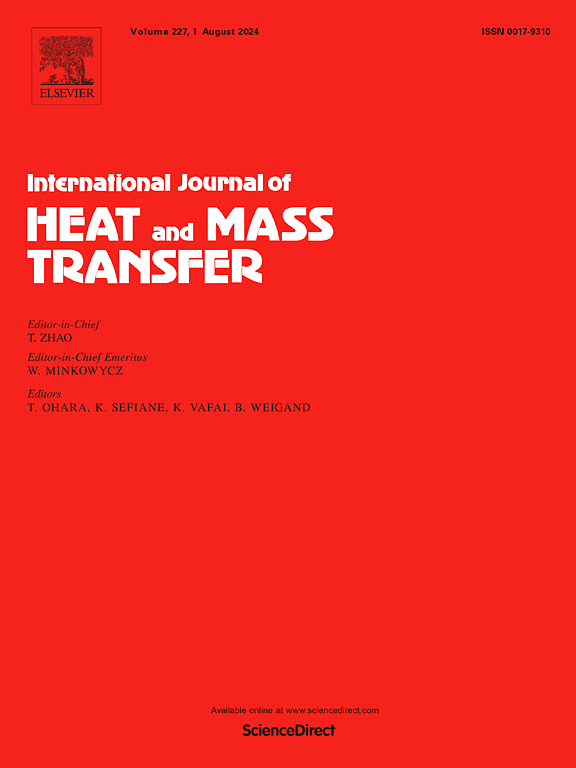The effect of dataset size and the process of big data mining for investigating solar-thermal desalination by using machine learning
IF 5
2区 工程技术
Q1 ENGINEERING, MECHANICAL
International Journal of Heat and Mass Transfer
Pub Date : 2024-11-06
DOI:10.1016/j.ijheatmasstransfer.2024.126365
引用次数: 0
Abstract
Machine learning's application in solar-thermal desalination is limited by data shortage and inconsistent analysis. This study develops an optimized dataset collection and analysis process for the representative solar still. By ultra-hydrophilic treatment on the condensation cover, the dataset collection process reduces the collection time by 83.3 %. Over 1,000 datasets are collected, which is nearly one order of magnitude larger than up-to-date works. Then, a new interdisciplinary process flow is proposed. Some meaningful results are obtained that were not addressed by previous studies. It is found that Radom Forest might be a better choice for datasets larger than 1,000 due to both high accuracy and fast speed. Besides, the dataset range affects the quantified importance (weighted value) of factors significantly, with up to a 115 % increment. Moreover, the results show that machine learning has a high accuracy on the extrapolation prediction of productivity, where the minimum mean relative prediction error is just around 4 %. The results of this work not only show the necessity of the dataset characteristics’ effect but also provide a standard process for studying solar-thermal desalination by machine learning, which would pave the way for interdisciplinary study.
数据集规模的影响以及利用机器学习研究太阳能海水淡化的大数据挖掘过程
由于数据短缺和分析不一致,机器学习在太阳能热海水淡化领域的应用受到限制。本研究针对具有代表性的太阳能蒸馏器开发了一种优化的数据集收集和分析流程。通过对冷凝盖进行超亲水处理,数据集收集流程将收集时间缩短了 83.3%。收集到的数据集超过 1,000 个,比最新成果多出近一个数量级。然后,提出了一个新的跨学科流程。获得了一些有意义的结果,这些结果是之前的研究没有涉及到的。研究发现,对于大于 1,000 的数据集,Radom Forest 可能是一个更好的选择,因为它既精确又快速。此外,数据集的范围对因素的量化重要性(加权值)影响很大,最多可增加 115%。此外,结果表明,机器学习对生产率的外推预测具有很高的准确性,最小平均相对预测误差仅为 4%。这项工作的结果不仅说明了数据集特征影响的必要性,还为利用机器学习研究光热海水淡化提供了一个标准流程,为跨学科研究铺平了道路。
本文章由计算机程序翻译,如有差异,请以英文原文为准。
求助全文
约1分钟内获得全文
求助全文
来源期刊
CiteScore
10.30
自引率
13.50%
发文量
1319
审稿时长
41 days
期刊介绍:
International Journal of Heat and Mass Transfer is the vehicle for the exchange of basic ideas in heat and mass transfer between research workers and engineers throughout the world. It focuses on both analytical and experimental research, with an emphasis on contributions which increase the basic understanding of transfer processes and their application to engineering problems.
Topics include:
-New methods of measuring and/or correlating transport-property data
-Energy engineering
-Environmental applications of heat and/or mass transfer

 求助内容:
求助内容: 应助结果提醒方式:
应助结果提醒方式:


